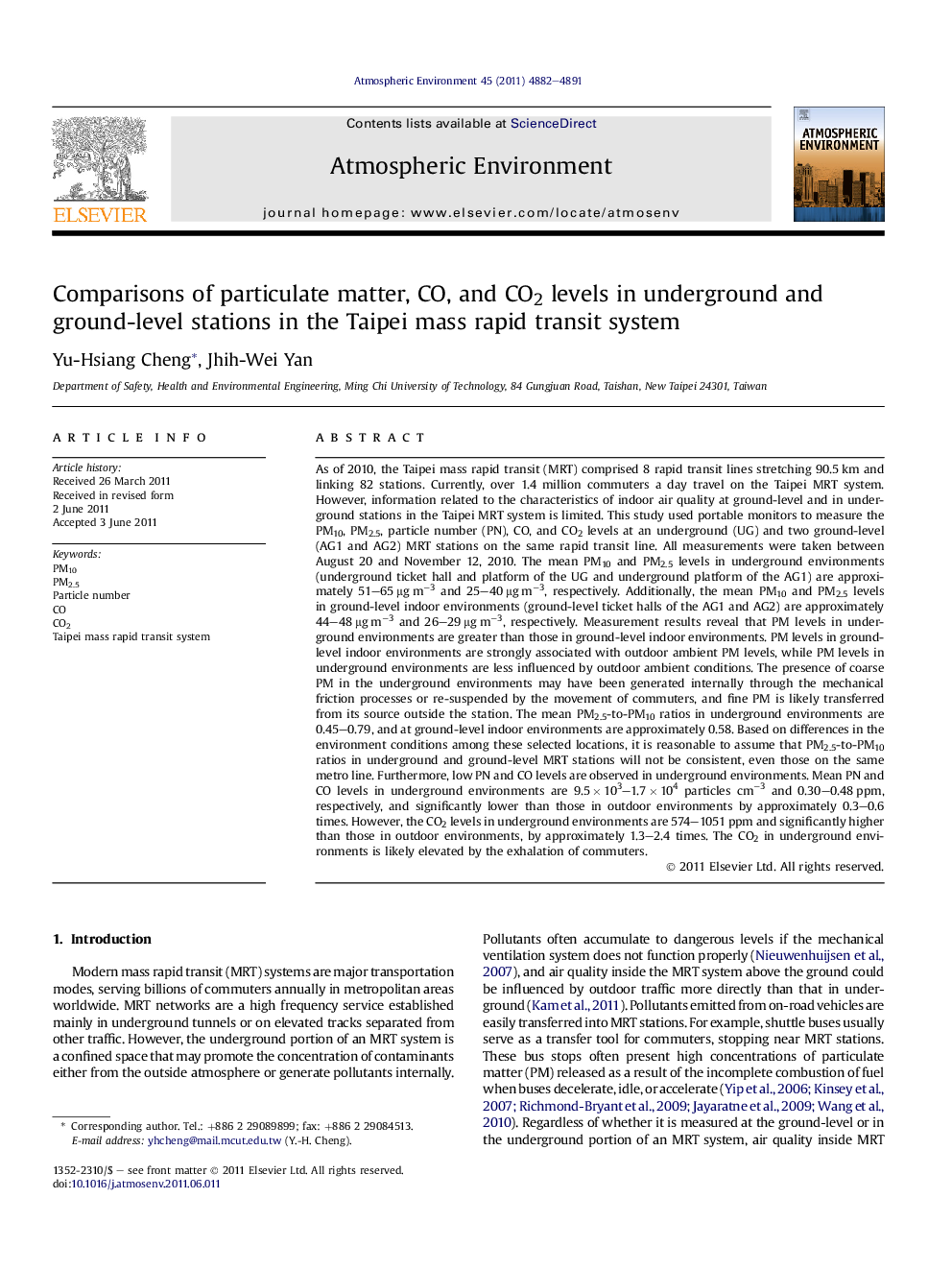| کد مقاله | کد نشریه | سال انتشار | مقاله انگلیسی | نسخه تمام متن |
|---|---|---|---|---|
| 4439595 | 1311026 | 2011 | 10 صفحه PDF | دانلود رایگان |

As of 2010, the Taipei mass rapid transit (MRT) comprised 8 rapid transit lines stretching 90.5 km and linking 82 stations. Currently, over 1.4 million commuters a day travel on the Taipei MRT system. However, information related to the characteristics of indoor air quality at ground-level and in underground stations in the Taipei MRT system is limited. This study used portable monitors to measure the PM10, PM2.5, particle number (PN), CO, and CO2 levels at an underground (UG) and two ground-level (AG1 and AG2) MRT stations on the same rapid transit line. All measurements were taken between August 20 and November 12, 2010. The mean PM10 and PM2.5 levels in underground environments (underground ticket hall and platform of the UG and underground platform of the AG1) are approximately 51–65 μg m−3 and 25–40 μg m−3, respectively. Additionally, the mean PM10 and PM2.5 levels in ground-level indoor environments (ground-level ticket halls of the AG1 and AG2) are approximately 44–48 μg m−3 and 26–29 μg m−3, respectively. Measurement results reveal that PM levels in underground environments are greater than those in ground-level indoor environments. PM levels in ground-level indoor environments are strongly associated with outdoor ambient PM levels, while PM levels in underground environments are less influenced by outdoor ambient conditions. The presence of coarse PM in the underground environments may have been generated internally through the mechanical friction processes or re-suspended by the movement of commuters, and fine PM is likely transferred from its source outside the station. The mean PM2.5-to-PM10 ratios in underground environments are 0.45–0.79, and at ground-level indoor environments are approximately 0.58. Based on differences in the environment conditions among these selected locations, it is reasonable to assume that PM2.5-to-PM10 ratios in underground and ground-level MRT stations will not be consistent, even those on the same metro line. Furthermore, low PN and CO levels are observed in underground environments. Mean PN and CO levels in underground environments are 9.5 × 103–1.7 × 104 particles cm−3 and 0.30–0.48 ppm, respectively, and significantly lower than those in outdoor environments by approximately 0.3–0.6 times. However, the CO2 levels in underground environments are 574–1051 ppm and significantly higher than those in outdoor environments, by approximately 1.3–2.4 times. The CO2 in underground environments is likely elevated by the exhalation of commuters.
► Coarse PM in the underground environments may have been generated internally.
► Fine PM is likely transferred from its source outside the station.
► Low PN and CO levels are observed in underground environments.
Journal: Atmospheric Environment - Volume 45, Issue 28, September 2011, Pages 4882–4891